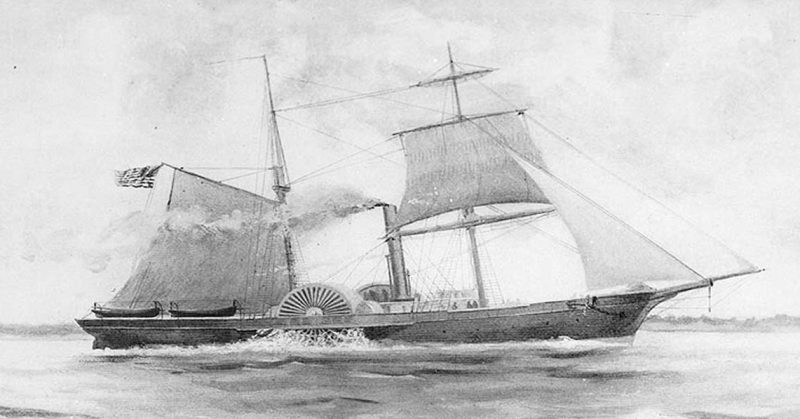Late in the day on April 11th, 1861, the ship Nashville was sailing past Charleston harbor. The crew could see a fleet of ships at the mouth of the harbor. There was tension in the air. Suddenly, a puff of smoke erupted from one of the paddle steamers! A cannon ball went skipping past Nashville’s bow. The captain hastily ordered the United States colors to be hoisted.
On seeing the flag the paddle steamer turned away, knowing that it was not an enemy ship. The Nashville had just seen the first naval shot of the American civil war. The ship which fired it was US Revenue Cutter Harriet Lane. She would go on to have a storied career in the Civil War, fighting on both sides of the conflict, until she was converted to a blockade runner.
The Harriet Lane was laid down in 1857, a copper plated side-paddle steamer. Originally purchased by the US Treasury Department, she was transferred to the Navy for a brief period. The Harriet Lane was part of a squadron bound for Paraguay. They were sent to coerce Paraguay into paying reparation for mistakenly attacking an American navy ship.
While with the Naval squadron, Harriet Lane proved herself invaluable as a Revenue Cutter. She was involved in towing and saving the deeper keeled Naval ships when they ran aground in the shallow waters around Paraguay. After this expedition, she returned to the United States to serve as a Revenue Cutter.
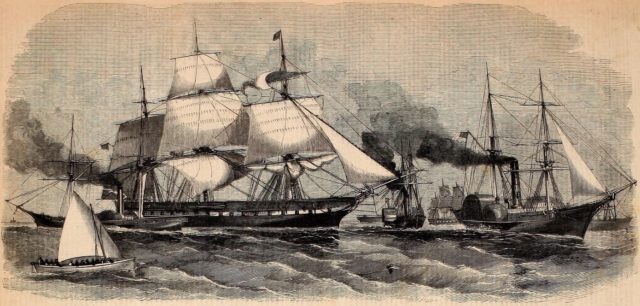
With the Civil War about to erupt, the Harriet Lane was transferred to the Navy in March 1861. She was dispatched to assist with the resupply of Fort Sumter during the first Civil War battle. Union army officer Major Robert Anderson had been stranded there with 85 men. The Naval column was to either supply the troops or evacuate them.
Unfortunately, when they arrived in the harbor they realized it was too dangerous to approach. The Confederate batteries on either side of the harbor would destroy them if they tried. They were forced to wait and eventually watch while the Confederate shore batteries opened fire on the fort. The Civil War had begun in earnest. When Major Anderson surrendered on the 13th the Naval column withdrew. They were now at war.
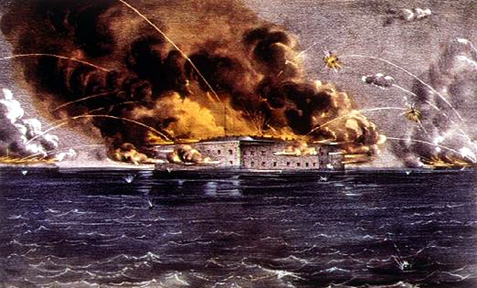
The next action for the Harriet Lane was a reconnaissance at Pig Point, Virginia. Here she faced her first action, being fired upon by a Confederate shore battery. After beating a hasty retreat, she escaped with five wounded crew. Her next action would prove more successful.
She joined a squadron of three ships, bound for the Hatteras Inlet, North Carolina. The Union had imposed a full-scale blockade of all Confederate ports. They were hoping to choke the secessionist states into submission. Any blockade will lead to blockade running. In August 1861 the Harriet Lane, Monticello, and Pawnee were sent on a sortie from Hampton Roads, Virginia, to blockade runners working in the area.
While off the Hatteras they also participated in the first combined arms operation of the Civil War: an amphibious landing to take Fort Hatteras and Fort Clark. The large naval ships sat far out at anchor providing general support. The Harriet Lane with her two small sister ships provided close range, accurate gunfire from just offshore. The landing was a success and proved to be a significant morale boost for the Union, who were still suffering from a defeat at Bull Run, Virginia.
More importantly than the political gains, the Union now had a Naval base deep in southern waters from which they could continue their blockade.
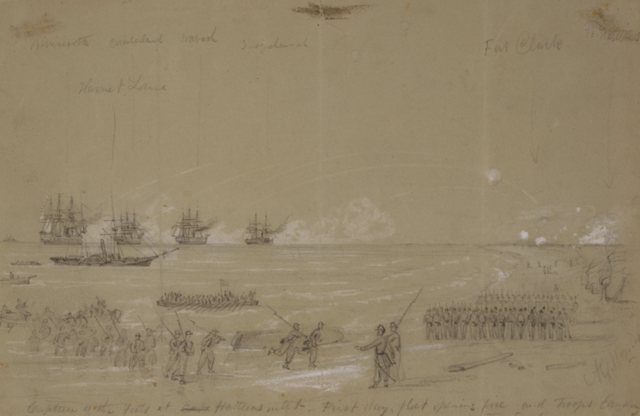
After running aground near Hatteras the Harriet Lane was refitted. She then joined Union Commander Porter’s Mortar Flotilla at Key West in February 1862. The Union had their eyes set on one great prize: New Orleans. Its capture would allow Union troops to move north along the Mississippi, meeting other Union troops marching south from Illinois. This would split the Confederacy in two, hopefully bringing a quick end to the war.
While with the flotilla, the Harriet Lane was chosen as the flagship, not only for her firepower but also for her speed. At Forts Jackson and St. Philips she helped provide the intense fire support necessary for other Union ships to break through, up the river.
For the next 3 months, the Harriet Lane patrolled the northern Gulf coast, supporting Union actions at the mouth of the Mississippi and in Florida. On May 30 she supported a failed push to take Vicksburg, and again supported the retreat from Vicksburg, on July 15. Unfortunately, her luck was about to change.
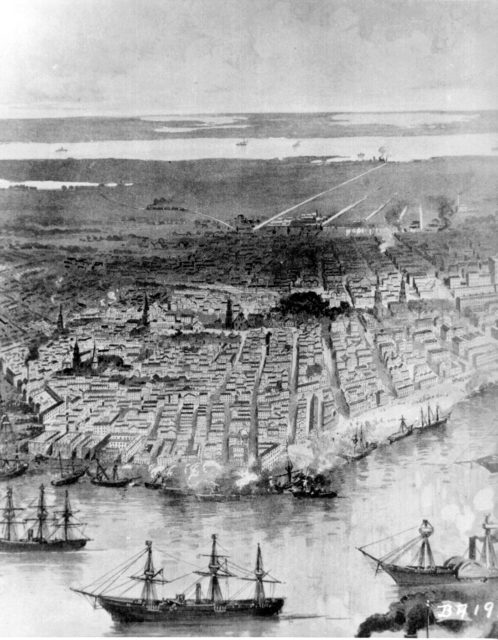
On October 3rd the Harriet Lane joined a flotilla headed for Galveston, Texas. They entered the harbor the next day and silenced the shore batteries. On the 9th, Union Marines entered the city itself, capturing it. The Harriet Lane remained in the harbor, protecting from the sea, to deter Confederate ships from trying to retake Galveston.
On January 1st, 1863, the Confederates came – by land. General Magruder had rallied Confederate troops in the area and was marching towards the city.
The soldiers quickly fought their way to the harbor, where they opened fire on the Union ships from the land. The 6 ship flotilla remained at anchor, firing back in an attempt to force the assaulting Confederates back.
Two Confederate ships appeared to the south and steamed towards the battle. The two Confederate ships, Neptune and Bayou City, met with heavy fire from the Union ships, but thanks to the Confederate shore batteries, were able to get in close. The Neptune was disabled, but the Bayou City continued steaming forward. She finally rammed the Harriet Lane, pushing her into a heavy list. The Bayou City sailors, along with Confederate soldiers from the shore, boarded the disabled Union ship and a bloody fight ensued. The Captain and an Executive Officer were killed although the crew of the Harriet Lane fought tenaciously. Alas, it was to no avail. She was finally overwhelmed and captured.
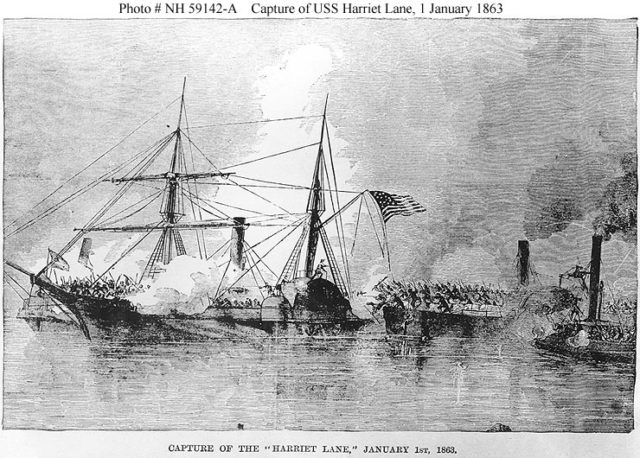
After her capture, she was put to use by the Texas Maritime Service as a gunboat for the Confederacy. There were questions about the legality of her ownership and whether or not she should be a prize. To solve this confusion they sold her to the Confederate Navy, who stripped her of her guns and filled her hold with cotton, renaming her Lavinia. She made one final mad dash for Cuba, only to be discovered by a Union ship, and interned in Havana for the remainder of the war.
The Harriet Lane’s story is a fascinating example of the smaller naval battles of the American Civil War. She fought all down the coast, in both the Atlantic and the Gulf. Her eventual fate was certainly too mundane for the ship which fired the opening naval shot of the war.
